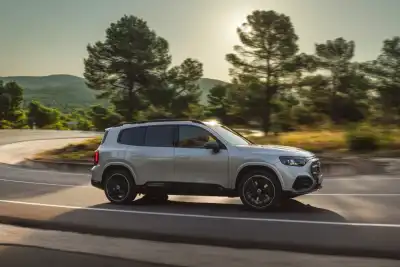Introducing the McLaren W1: the latest addition to the British automaker's elite ‘1’ series, following in the footsteps of the iconic F1 and P1 models. This beast boasts a mind-blowing 1,258 horsepower twin-turbo V8 hybrid engine, capable of blasting from 0 to 62 mph in just 2.7 seconds and hitting a top speed of 217 mph.
The numbers keep getting crazier—0 to 124 mph takes only 5.8 seconds, and you can reach 186 mph in under 12.7 seconds. That means it’s faster than the McLaren Speedtail and can outpace the Senna by a whopping three seconds on the Nardo test track in Italy.
to stop? The W1 can go from 124 mph to a complete halt in just 100 meters. With a powerful E-module contributing 342 horsepower and a V8 delivering an astonishing 915 horsepower, the W1 surpasses all previous McLaren road cars in terms of power. It also holds the highest specific output (230 hp per litre) and the best power-to-weight ratio (899 hp per ton) in the brand’s history. Weighing in at 1,399 kg, the car is also 47 mm longer than the P1 at 4,635 mm.
The W1’s performance is enhanced by its “Formula One-inspired” aerodynamics. It features adjustable ride height that drops by up to 37 mm and an Active Long Tail rear wing that extends 300 mm, generating a staggering 1,000 kg of downforce at 174 mph. McLaren claims the W1 showcases “performance everywhere,” pushing the boundaries of what a ‘1’ car can achieve.
Crafted with a carbon-fibre monocoque, the W1 comes equipped with carbon-ceramic brakes and a sophisticated suspension system that uses inboard springs and dampers, along with 3D-printed components. The steering system is designed for maximum precision, and the car rolls on ultra-light magnesium wheels fitted with exclusive Pirelli P-Zero Trofeo RS tyres.
While technically a plug-in hybrid, the W1's electric capabilities are minimal, serving mainly for battery conditioning. The 1.4 kWh battery provides an official range of just 1.6 miles, but it allows for silent starts and smooth maneuvers. Its eight-speed dual-clutch transmission includes an electric reverse gear.
Unveiled to celebrate McLaren’s 50th anniversary of its first F1 title in 1974, the W1 continues a legacy of excellence, with a total of 399 units set to be produced—all of which are already spoken for.
The design is a sleek evolution of previous models, crafted with 350 hours of wind tunnel testing to optimise aerodynamics. The unique anhedral doors swing open to reveal a new cabin, where fixed seats are integrated into the car's structure. The pedals, steering wheel, and controls adjust to fit the driver, creating what McLaren calls “the purest connection to the car.”
Customisation is virtually limitless thanks to McLaren’s MSO program, offering features like a new lightweight interior material that minimises waste. The car’s exterior can also be tailored with single or two-tone finishes.
A standout feature of the W1 is its digital rearview mirror, which uses a camera below the shark-fin antenna, allowing for an impressive 117 liters of storage behind the front seats—perfect for two weekend bags or helmets. Despite having no rear window, the design includes ultra-thin A-pillars for excellent visibility.
Inside, the W1 features a new flat-bottom steering wheel with buttons for ‘Boost’ and ‘Drag Reduction’ functions—an industry first for McLaren. The digital dashboard pairs with an eight-inch touchscreen, integrating the McLaren Infotainment System with Apple CarPlay and USB-C connectivity.
Priced at around £2 million (including taxes), the McLaren W1 is a serious statement piece in the supercar world.
Is the W1 a worthy successor to the legendary F1 and P1? Let us know your thoughts in the comments...




